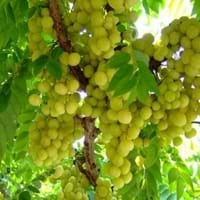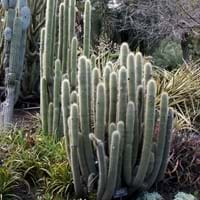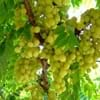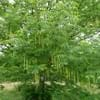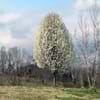Life Span
Perennial
Perennial
Origin
Not Available
Central America, South America, Brazil
Types
Not Available
cleistocactus strausii, cleistocactus winteri, cleistocactus samaipatanus
Habitat
Forests, gardens, Hill prairies, Homesteads, Rocky areas, Woodlands
Not Available
USDA Hardiness Zone
Not Available
12-15
AHS Heat Zone
Not Available
12-10
Sunset Zone
Not Available
12, 13, 21, 22, 23, 24
Habit
Bushy, Evergreen
Upright/Erect
Flower Color
Light Green, Lime Green
Red, Orange, Salmon
Flower Color Modifier
Not Available
Not Available
Fruit Color
Green, Light Green
Not Available
Leaf Color in Spring
Yellow, Green, Gray Green
Not Available
Leaf Color in Summer
Light Green
Not Available
Leaf Color in Fall
Yellow, Green, Gray Green
Not Available
Leaf Color in Winter
Yellow, Green, Gray Green
Not Available
Leaf Shape
Ovate
Succulent
Plant Season
Spring, Summer, Fall, Winter
Spring, Summer, Fall, Winter
Sunlight
Full Sun, Partial Sun, Partial shade
Full Sun
Growth Rate
Fast
Not Available
Type of Soil
Loam, Sand
Loam, Sand
The pH of Soil
Acidic, Neutral, Alkaline
Acidic, Neutral, Alkaline
Soil Drainage
Well drained
Well drained
Bloom Time
Early Summer, Summer, Late Summer, Early Fall
Spring, Summer
Tolerances
Pollution, Salt, Soil Compaction
Drought
Where to Plant?
Ground
Container, Ground, Pot
How to Plant?
Seedlings, Stem Cutting, Stem Planting
Seedlings, Stem Cutting
Plant Maintenance
Low
Medium
Watering Requirements
Keep ground moist, Requires regular watering, Use Mulches to help prevent water loss during hot and windy weather
Reduce watering in winter
In Summer
Lots of watering
Lots of watering
In Spring
Moderate
Moderate
In Winter
Average Water
Average Water
Soil pH
Acidic, Neutral, Alkaline
Acidic, Neutral, Alkaline
Soil Type
Loam, Sand
Loam, Sand
Soil Drainage Capacity
Well drained
Well drained
Sun Exposure
Full Sun, Partial Sun, Partial shade
Full Sun
Pruning
Cut or pinch the stems, Do not prune during shooting season, Remove deadheads
No pruning needed, Remove damaged leaves, Remove dead branches, Remove dead leaves
Fertilizers
High Potash Fertilizer
Fertilize the soil before planting, slow-release fertilizers
Pests and Diseases
Bacterial Blight, Foliage-feeding caterpillars, Moth
Bacterial Stem Rot, fungus, Mealybugs, Spider mites
Plant Tolerance
Pollution, Salt and Soil Compaction
Drought
Flower Petal Number
Single
Single
Foliage Texture
Fine
Bold
Foliage Sheen
Matte
Not Available
Attracts
Caterpillar
Hummingbirds
Allergy
Skin irritation
Not Available
Aesthetic Uses
Not Used For Aesthetic Purpose
Landscape Designing, Showy Purposes, Wild gardens
Beauty Benefits
Blood purifying, Glowing Skin, Good for skin and hair, Provides herbal hair care, Speed hair growth
Not Available
Environmental Uses
Air purification, soil stabilisation
Air purification
Medicinal Uses
Atherosclerosis, Cancer, Diabetes, Diarrhea, High blood pressure, High cholestrol, Obesity, Vitamin C
No Medicinal Use
Part of Plant Used
Fruits
Whole plant
Other Uses
Making Shampoo, Used for its medicinal properties, Used in herbal medicines
Florist trade and landscaping, Used as Ornamental plant
Used As Indoor Plant
No
No
Used As Outdoor Plant
Yes
Yes
Garden Design
Cottage garden
Container, Houseplant, Rock Garden, Wall
Botanical Name
Phyllanthus acidus
CLEISTOCACTUS
Common Name
Tahitian gooseberry, country gooseberry, star gooseberry, starberry, grosella
Cleistocactus
In Hindi
ताहितियन आमला
Cleistocactus
In German
Tahitian Stachelbeere
Cleistocactus
In French
Tahitian Gooseberry
Cleistocactus
In Spanish
Tahitian grosella espinosa
Cleistocactus
In Greek
Tahitian Φραγκοστάφυλο
Cleistocactus
In Portuguese
Tahitian Gooseberry
Cleistocactus
In Polish
Tahitian agrest
Kleistokaktus
In Latin
Tahitian Gooseberry
Cleistocactus
Phylum
Magnoliophyta
Magnoliophyta
Class
Magnoliopsida
Magnoliopsida
Order
Malpighiales
Caryophyllales
Family
Phyllanthaceae
Cactaceae
Genus
Phyllanthus
Cleistocactus
Clade
Angiosperms, Eudicots, Rosids
Angiosperms, Core eudicots, Eudicots
Tribe
Phyllantheae
Trichocereeae
Subfamily
Not Available
Cactoideae
Number of Species
Not Available
Not Available
Importance of Tahitian Gooseberry and Cleistocactus
Want to have the most appropriate plant for your garden? You might want to know the importance of Tahitian Gooseberry and Cleistocactus. Basically, these two plants vary in many aspects. Compare Tahitian Gooseberry and Cleistocactus as they differ in many characteristics such as their life, care, benefits, facts, etc. Every gardener must at least have the slightest clue about the plants he wants to plant in his garden. Compare their benefits, which differ in many ways like facts and uses. The medicinal use of Tahitian Gooseberry is Atherosclerosis, Cancer, Diabetes, Diarrhea, High blood pressure, High cholestrol, Obesity and Vitamin C whereas of Cleistocactus is No Medicinal Use. Tahitian Gooseberry has beauty benefits as follows: Blood purifying, Glowing Skin, Good for skin and hair, Provides herbal hair care and Speed hair growth while Cleistocactus has beauty benefits as follows: Blood purifying, Glowing Skin, Good for skin and hair, Provides herbal hair care and Speed hair growth.
Compare Facts of Tahitian Gooseberry vs Cleistocactus
How to choose the best garden plant for your garden depending upon its facts? Here garden plant comparison will help you to solve this query. Compare the facts of Tahitian Gooseberry vs Cleistocactus and know which one to choose. As garden plants have benefits and other uses, allergy is also a major drawback of plants for some people. Allergic reactions of Tahitian Gooseberry are Skin irritation whereas of Cleistocactus have Not Available respectively. Having a fruit bearing plant in your garden can be a plus point of your garden. Tahitian Gooseberry has showy fruits and Cleistocactus has showy fruits. Also Tahitian Gooseberry is not flowering and Cleistocactus is flowering. You can compare Tahitian Gooseberry and Cleistocactus facts and facts of other plants too.
